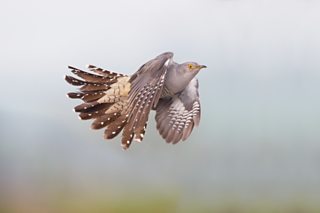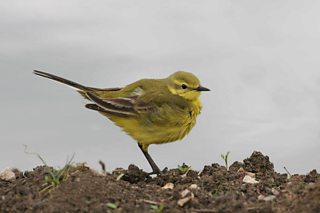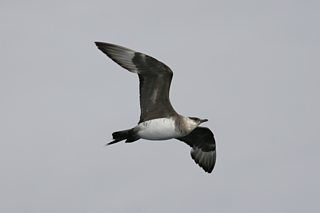Paul Stancliffe from the British Trust for Ornithology kicks off this year's Springwatch Migration Diary by saying goodbye to some our summer visitors.
With the meteorological summer drawing to a close it is rather fitting that autumn bird migration is well under way. Rather depressingly, here at the British Trust for Ornithology we see the first signs of autumn migration just as summer starts, with the departure of the first of our satellite tagged cuckoos; this year the first bird left the UK on 16 June.

The first cuckoo left the UK for Africa on 16th June. Credit: Edmund Fellows/BTO
This time, the long flight south appears to have been a tough one for our cuckoos. The spring here was largely cool, wet, and at times very windy, so they might not have been in the best of condition when they left the UK. At the Mediterranean stopover sites the conditions were pretty much the opposite of what they experienced here. Northern Italy, the main stopover site for the birds that take the central Mediterranean route, was in the grip of a severe drought and soaring temperatures when they arrived there. The birds only stayed here for a few days before heading south, giving an indication that food may have been hard to come by. However, at the time of writing, eight birds have made it across the Sahara desert and are resting on its southern edge.
Follow them here.

Yellow wagtails are starting to move south. Credit: Jill Pakenham/BTO
Observations from coastal watchpoints and bird observatories have charted a step-change in bird migration during the last week, particularly in the number of warblers - mainly willow and sedge - chats, mainly wheatear and whinchat - and wagtails, mainly yellow but a few white wagtails too. The BTO’s Nunnery Lakes Reserve even managed a few yellow wagtails and the BirdTrack reporting rate shows that they are bang on cue.

BirdTrack reporting rate of migrating yellow wagtails.
The weather forecast for the next week is looking mixed, so, during the quieter spells we can expect more of the same, with the possibility of swallows and martins moving through in good numbers. Westerly squalls should see terns and skuas pushed close to west facing shores, with arctic terns and skuas most likely.

Look out for Arctic Skuas on the west coasts. Credit: Joe Pender.
On the rarity front, a small window of easterly airflow on Saturday into Sunday could bring one or two Barred Warblers, Wrynecks and red-backed shrikes with it.
There'll be more migration updates from Paul and the BTO in the coming weeks. Let us know if you've noticed any migration in your area by using the comments below.
Related Content
